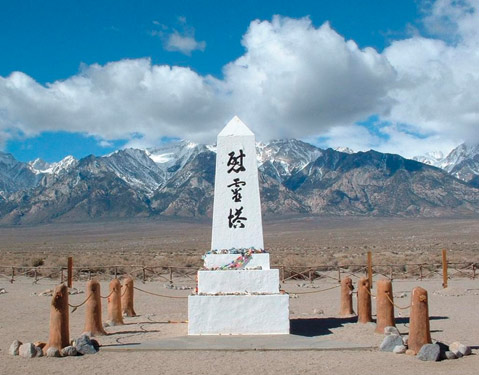When Fear Reigned in Santa Barbara
Suspicion of Japanese Americans Led to Internment

SUSPICION: When the brutal hand of war grasped Santa Barbara in December 1941, residents of Japanese ancestry had no way of knowing that a wave of irrational fear, bigotry, and greed would uproot them from their homes within weeks.
Though most were U.S. citizens, and there was not a shred of evidence that they intended sabotage, they were sent to concentration camps with only what they could carry.

Today, we hear urgent calls to round up other immigrants (pick a nationality or religion) and deport them because of what some think they might do. Our shameful treatment of Japanese Americans is a horrible example of how not to react to terror from abroad, though some seem to see it as a model.
You had to have been living in the U.S. to understand the anger and hysteria that swept the nation after Japan bombed Pearl Harbor on December 7, 1941. The U.S. had coldly stood by, isolationist, as the German blitz left London in ruins. But let the Japanese bomb an island 2,000 miles out in the Pacific, one that we grabbed after American and European groups overthrew the Hawaiian monarchy, and America went to war.
Men infuriated by the “sneak attack” lined up at recruiting centers and went to war against Japan, Italy, and Germany. (In 1993 Congress apologized for the Hawai‘i overthrow and admitted that it was unlawful.)
Anti-Japanese sentiment built up, much of it aimed at preventing Japanese farmers from acquiring more land. The 1913 Alien Land Act signed by virulently anti-Japanese Governor Hiram Johnson had already prevented them from buying farmland or having long leases. T.M. Storke, owner of the Santa Barbara News-Press, backed the law, saying, “It is a farmers’ movement against the encroachment of the Japanese expansion in agriculture.”
Amid many calls to move all coastal Japanese into relocation camps, president Franklin D. Roosevelt signed Executive Order 9066 on February 19, 1942, authorizing the roundup and internment of 120,000 West Coast residents of Japanese ancestry. Busy with the war, FDR reportedly didn’t bother holding a meeting about it. He just made a phone call to his Secretary of War.
When a Japanese sub shelled an oil facility at Ellwood at the edge of Goleta on February 23, causing minor damage, some believed they saw suspicious “signals” in the hills.
The “signals” were determined to be only auto lights on roads in the hills, but the rumors added to Santa Barbarans’ jitters. Was an invasion of California being planned?
A few days later, District Attorney Percy Heckendorf told the West Coast military commander in San Francisco that “enough has been learned of the shore signals in Monday night’s Japanese submarine attack” to make removal of all Santa Barbara Japanese imperative.
And so it was that in April 1942, those of Japanese ancestry were required to register at the Veterans Memorial Building on Cabrillo Boulevard and take a brief physical.
Dr. Newton Wayland of the county health department and friend of many of those he examined commented years later, “I thought it was one of the worst tragic blunders in the history of our country.”
On April 27, an “advance party,” as a newspaper account put it, of buses and cars left town, carrying a bewildered group of people headed to a San Joaquin Valley assembly center.
Many ended up in the desert at Gila River, Arizona, or Manzanar, a rocky, desolate expanse off Highway 395 in California’s Owens Valley.
Powerful voices in farming insisted that Japanese and Japanese Americans never again be allowed to live on the California coast. Signs went up around California: “We Don’t Want Japs Back Here Again — Ever.”
Backing the idea of never allowing them back was the powerful Leo Preisker of Santa Maria, for 20 years chair of the County Board of Supervisors: “We don’t ever want to see the time return when we have to compete with Japanese again in this valley.”
Meanwhile, men of Japanese ancestry formed the famed 442nd Infantry Regiment, fighting in Italy, southern France, and Germany, becoming the most highly decorated unit for its size in U.S. history.
When ousted Santa Barbarans returned home after the war, they often found that assets they entrusted to others had vanished and that their businesses were gone. But they went to work and built up new businesses and farms.



